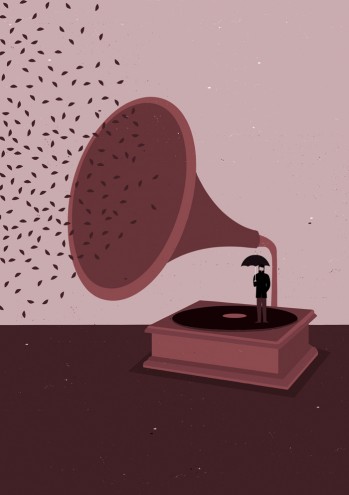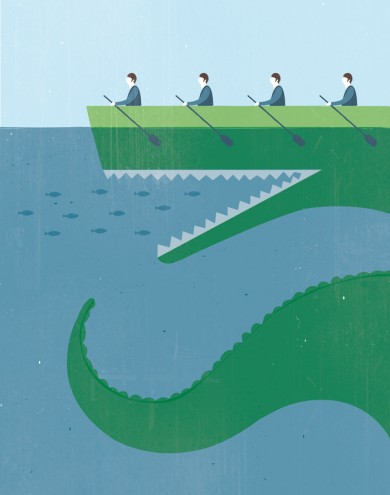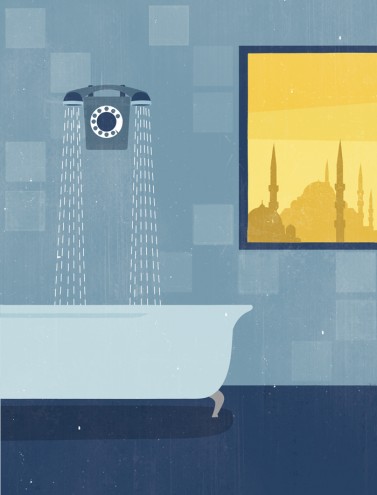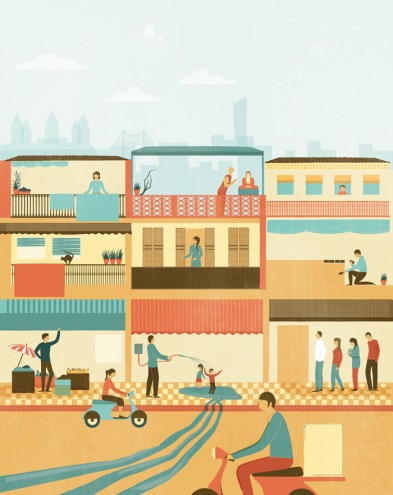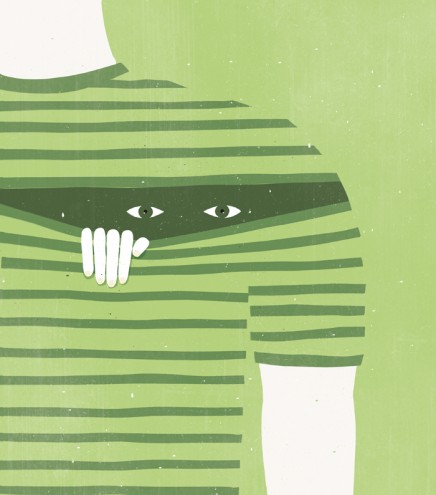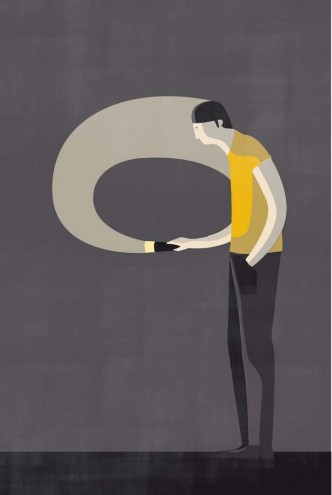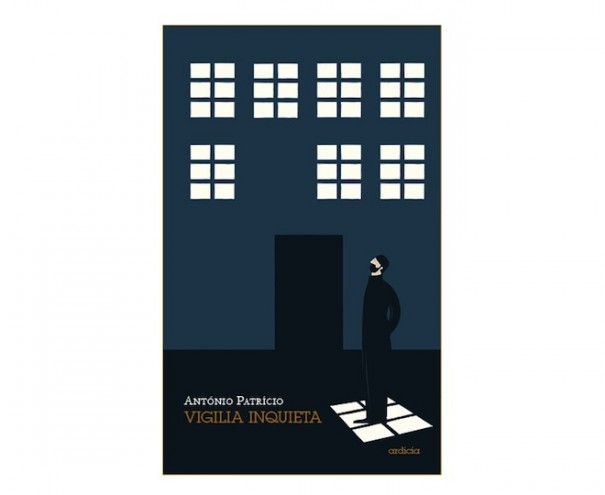From the Series
Barcelona-based illustrator Bea Crespo is the second of our WeTransfer Featured Artists, a series that we are running to highlight illustrators, photographers and designers all over the world. The first was Slovakian Martina Paukova, whose bold artworks transform everyday scenarios into zooty, cartoonish scenes.
Crespo says she spends a lot of time thinking before illustrating. The conceptual underpinnings in her illustrations are apparent: her work covers topics from social capital to romance in the Facebook era.
Though her style is pretty consistent, her work traverses continents in its depictions of cityscapes and cultural symbols, making it ideal for travel magazines. She has had work published in publications such as Fah Thai (Hong Kong), Avenue Magazine (Canada), El Malpensante (Colombia), Expansion (Mexico), Panenka Magazine (Spain) and The Clerkenwell Post (London).
A fine art graduate from the University of Madrid, Crespo often includes a humorous bent to her work. A rowing crew paddle a boat that is revealed to be a giant crocodile beneath the water. A suited man's tie tethers him to a book, where it keeps place as a bookmark. A man shines a flashlight that pools back onto himself, leaving him stranded in the dark.
We ask her how she works:
How would you describe your illustration style?
It is conceptual and simple. It takes me more time to think about what I want to tell, than telling it.
What is the best thing about illustration as a medium? What can it do that other art forms cannot?
Its closeness, I think, for the artist and also for the people interested in it.
Talk us through your process – hand-drawn or digital, where your ideas come from, whether you work quickly or slowly and meticulously?
I always begin with the hand and the pencil, trying to find good ideas. They could come from everywhere, so you must be as a sponge always open to everything. I spend a lot of time making sketches and thinking about the best idea and once I have it, I go to my computer and work in digital.
Who or what are your biggest creative influences?
I try to be influenced by all forms of expression: films, books, graphic design and art. In terms of illustration, a lot of people have influenced me, from Joan Brossa, to Pablo Amargo and Tatsuro Kiuchi, just to name a few.
Can you share one or two pieces that you are most proud of and tell us why?
It is difficult to choose. But I really like the cover illustration I did for a book [by António Patrício], Vigilia Inquieta. It’s the kind of point I try to get to when illustrating, a simple but impactful idea.
What do you do when you’re stuck and can’t find a way to start?
I go out. After walking two streets, everything looks different.
Do you sketch and draw every day?
Yes, you must try to even when you don't have commissions.
Has being an illustrator changed the way you look at the world?
I don’t know... maybe I became an illustrator because I already have a specific way of looking at the world. I prefer to think that.
Whose work do you admire – any genre, any industry?
Anyone who makes people feel that they love their work. No matter who they are or what they are doing, when you can feel it, that's something to admire.

